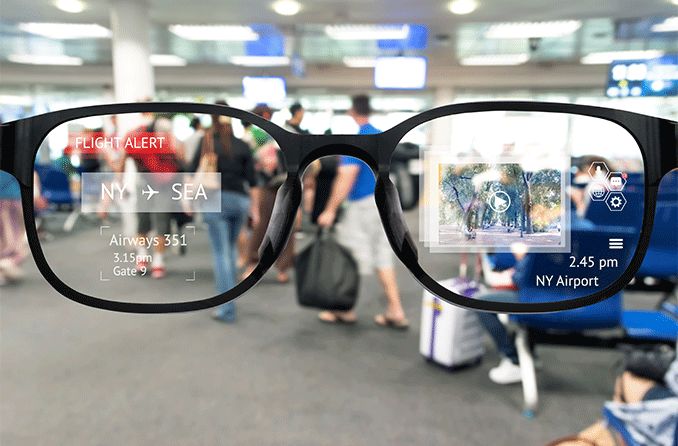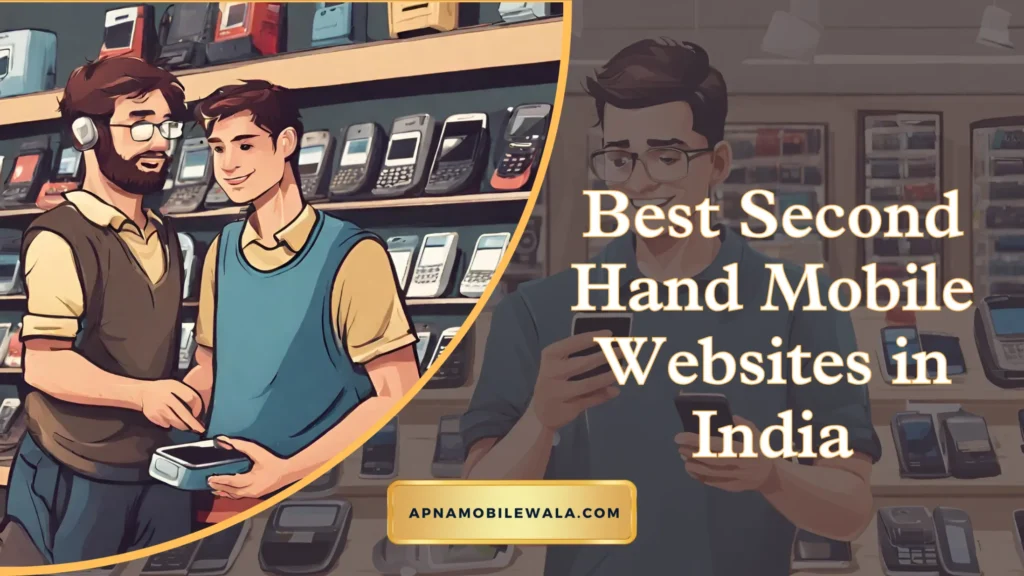Stepping into the Metaverse: How Phones Will Unlock Virtual Worlds
The term “metaverse” has taken the tech world by storm. This immersive virtual space promises a future where we can work, play, and socialize in ways never before imagined. But how will we access these virtual worlds? The answer might be closer than you think – your smartphone!
Mobile: The Key to the Metaverse?
While powerful VR headsets might be the first thing that comes to mind, smartphones have several key advantages that make them prime candidates for metaverse access:
- Ubiquity: Smartphones are already ubiquitous. We carry them everywhere, making the metaverse instantly accessible.
- Processing Power: Modern smartphones are incredibly powerful, and capable of running complex applications and rendering impressive graphics.
- AR Integration: Augmented reality (AR) overlays virtual elements onto the real world. This could allow us to interact with the metaverse seamlessly, blurring the lines between reality and virtuality.
So, how might we use our phones to access the metaverse? Here are some possibilities:
- Mobile Apps: Imagine dedicated metaverse apps that allow you to explore virtual worlds, interact with avatars, and participate in activities – all from your phone’s screen.
- Cloud Rendering: Processing-intensive tasks could be handled by powerful cloud servers, with your phone simply streaming the visuals and sending control signals.
- AR Overlays: AR could be used to display virtual objects and information within your physical environment. This could allow for a blended metaverse experience where the virtual and real worlds coexist.
Challenges and Considerations:
While mobile access to the metaverse is promising, there are challenges to consider:
- Battery Life: Running graphically demanding metaverse applications could drain phone batteries quickly.
- Processing Power: Not all phones are created equal. Ensuring a smooth metaverse experience across a wide range of devices could be tricky.
- Data Usage: Streaming high-resolution metaverse content could consume significant data.
The Future is Mobile:
Despite the challenges, mobile access to the metaverse has the potential to make this virtual world truly accessible. As technology advances, we can expect to see phones become even more powerful and energy-efficient, paving the way for a seamless and immersive metaverse experience on the go.
The metaverse is still in its early stages, but one thing’s for sure: mobile phones will play a crucial role in shaping how we access and interact with these virtual worlds. So, get ready to unlock the metaverse – right from your pocket!
Metaverse and Mobile App:
The Mobile Metaverse: Apps as Gateways to Virtual Worlds
The metaverse is a hot topic, promising a future where we work, play, and socialize in immersive virtual spaces. But how will we access these digital realms? Enter the humble mobile app – a potential key to unlocking the metaverse on a device we already carry everywhere.
Why Mobile?
Smartphones boast several advantages for metaverse access:
- Ubiquity: They’re omnipresent, offering instant access to the metaverse from anywhere.
- Processing Power: Modern phones are surprisingly powerful, capable of running complex apps and rendering impressive graphics.
- AR Integration: Augmented reality (AR) overlays virtual elements onto the real world. Imagine interacting with the metaverse seamlessly, blurring the lines between reality and the virtual.
How Mobile Apps Will Shape the Metaverse:
Mobile apps could play a pivotal role in shaping our metaverse experience:
- Dedicated Metaverse Apps: Imagine dedicated apps allowing you to explore virtual worlds, interact with avatars, and participate in activities – all from your phone’s screen. Think social VR experiences condensed into a mobile format.
- Cloud Rendering: Complex processing could be handled by powerful cloud servers, with your phone simply streaming visuals and sending control signals. This would eliminate the need for bulky VR headsets.
- AR Overlays: AR could be used to display virtual objects and information within your physical environment. This could create a “blended” metaverse experience where the virtual and real coexist. Imagine attending a virtual concert with AR overlays that project the performers onto your living room wall.
Challenges and Considerations:
Mobile access to the metaverse isn’t without hurdles:
- Battery Life: Running demanding metaverse applications could drain phone batteries quickly. Imagine attending a virtual meeting and your phone dying halfway through!
- Processing Power: Not all phones are created equal. Ensuring a smooth metaverse experience across a wide range of devices could be tricky.
- Data Usage: Streaming high-resolution metaverse content could consume significant data. Make sure you have a robust data plan before diving into the metaverse!
The Future is Mobile-Friendly:
Despite the challenges, mobile access has the potential to make the metaverse truly accessible. As technology advances, phones will become more powerful and energy-efficient, paving the way for a seamless and immersive metaverse experience on the go.
Metaverse examples Brands:
The metaverse is a hotbed for brands looking to experiment and engage with customers in new and innovative ways. Here are some examples of brands making waves in the metaverse:
Fashion and Retail:
- Nike: The sportswear giant has created “NIKELAND” on Roblox, a virtual space where users can explore replicas of Nike headquarters, test out virtual sneakers, and even participate in mini-games.
- Gucci: Partnered with Roblox to create a virtual Gucci Garden exhibition showcasing limited-edition digital collectibles. They’ve also auctioned off virtual Gucci items for real-world money.
Entertainment:
- Warner Bros: Hosted a virtual “In the Heights” block party on Roblox, recreating elements from the movie and allowing users to participate in interactive experiences.
- Disney: Has filed patents for a “virtual-world simulator” suggesting they might create a metaverse experience based on their theme parks or characters.
Luxury Goods:
- Balenciaga: Partnered with Fortnite to sell limited-edition virtual clothing items that users could wear on their avatars within the game. These virtual items could also be purchased with real-world currency.
Automotive:
- Hyundai: Launched “Hyundai Mobility Adventure” on Roblox, a virtual world showcasing future transportation concepts. Users can explore different zones, test drive virtual Hyundai vehicles, and learn about the company’s vision for mobility.
Tech Companies:
- Meta (formerly Facebook): Their entire rebranding around the concept of the metaverse signifies their commitment to building the infrastructure and tools for this virtual world. They’ve also launched Horizon Worlds, a social VR platform where users can create and explore virtual spaces.
These are just a few examples, and as the metaverse continues to evolve, we can expect even more brands to explore its potential for marketing, advertising, and customer engagement.
Examples of Metaverse Games:
The metaverse is still in its early stages, but there are several existing games that can be seen as stepping stones towards a more realized metaverse experience. These games often have features that blur the line between the real world and the virtual world, and allow players to socialize and interact in meaningful ways. Here are some examples:
- Fortnite: This popular game offers a constantly evolving social space beyond just the battle royale mode. Players can attend virtual concerts, hang out in creative spaces built by other users, and even participate in interactive events like watching movies together in a virtual theater.
- Roblox: This platform allows users to create and play a mind-boggling variety of user-generated games and experiences. It fosters a strong sense of community and social interaction within its virtual world. Roblox even has its own currency, Robux, that can be used to purchase in-game items and experiences.
- Rec Room: This VR platform allows users to socialize, play games, attend events, and even build their own virtual spaces. It offers a sense of presence and interaction that goes beyond traditional online games. Rec Room also allows users to customize their avatars and unlock new items through gameplay.
- VRChat: This platform focuses heavily on user-created avatars and worlds. People can attend events, play games, or simply hang out and socialize with virtual avatars. VR Chat is known for its vast amount of user-generated content, and allows for a high degree of customization for avatars and virtual spaces.
These are just a few examples, and as the metaverse continues to evolve, we can expect to see even more games that push the boundaries of what’s possible in online gaming. Metaverse games will likely become more social and interactive, allowing players to connect with each other in new and meaningful ways.
Metaverse Technology:
The term “metaverse” refers to a vision of a future iteration of the internet. It’s not a single platform, but rather a network of interconnected virtual worlds where users can have rich, immersive experiences. Here’s a breakdown of the key technologies that could power the metaverse:
Virtual Reality (VR): VR headsets create a simulated environment that users can explore and interact with. Imagine attending a concert or conference in a virtual world that feels real.

Augmented Reality (AR): AR overlays virtual elements onto the real world. This could be used to display information, interact with virtual objects, or even blur the lines between the physical and virtual worlds. Imagine seeing product information overlaid on a physical object you’re holding in your hand.

Blockchain: This technology can be used to create secure digital assets and economies within the metaverse. For example, users might own virtual land or items in a metaverse world, and blockchain would ensure secure ownership and transfer of these digital assets.
Artificial Intelligence (AI): AI can play a role in powering virtual characters, personalizing user experiences, and even moderating content within the metaverse. Imagine AI-powered virtual assistants helping you navigate the metaverse or AI-driven characters that feel more lifelike and responsive.
High-Speed Networking: The metaverse will require a robust and fast internet infrastructure to handle the vast amount of data transfer needed for smooth operation. Imagine seamless streaming of high-resolution graphics and interaction with virtual worlds without lag.
Brain-Computer Interfaces (BCIs): While still in early development, BCIs could potentially allow for more natural and intuitive interaction with the metaverse in the future. Imagine controlling your avatar in a virtual world simply by thinking about it.

It’s important to remember that the metaverse is still a concept in development. The specific technologies used and their functionalities will likely evolve over time. However, these core technologies provide a glimpse into the potential building blocks of this future immersive virtual world.
The metaverse is still in its early stages, but one thing’s for sure: mobile phones will play a crucial role in shaping how we access and interact with these virtual worlds. So, get ready to unlock the metaverse – right from your pocket!
Thanks for Reading!
Relevant Content:
- OnePlus 12 Release date | Price & Review
- Vivo X100 Pro Release date | Price & Review
- Sony Xperia 1 VI Price and Review
- Realme 12 Pro Plus Review and Price
- OnePlus Nord CE4 Review and Price



